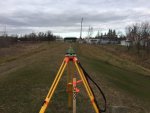We have a repeater 444.500+ that's getting hit by QRM on the input 449.500 Mhz
It consists of a pulsing signal that beeps steadily about once every second. It doesn't run all the time. It can go for an hour or so, then it stops for an hour or so.
We've done some triangulation with our beams, but nobody lives near where the source seems to be coming from. Here's a sample. (It's not that strong at my place, but really interferes with our repeater which is a lot higher than me).
https://dl.dropboxusercontent.com/u/10425557/440band-qrm.mp3
Has anyone heard a signal like this anywhere on the VHF or UHF bands? Knowing what it is might help track down the source..
Thanks in advance
It consists of a pulsing signal that beeps steadily about once every second. It doesn't run all the time. It can go for an hour or so, then it stops for an hour or so.
We've done some triangulation with our beams, but nobody lives near where the source seems to be coming from. Here's a sample. (It's not that strong at my place, but really interferes with our repeater which is a lot higher than me).
https://dl.dropboxusercontent.com/u/10425557/440band-qrm.mp3
Has anyone heard a signal like this anywhere on the VHF or UHF bands? Knowing what it is might help track down the source..
Thanks in advance


